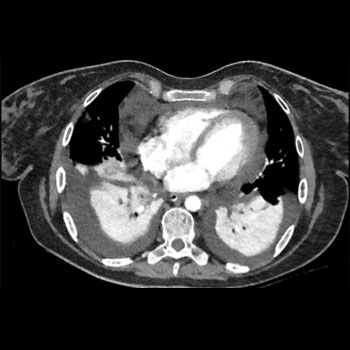Keywords
Intensive medicine, Vascular Access, Thoracic Medicine
Abstract
We present a rare case of large bilateral pleural effusion, pericardial effusion and pneumomediastinum caused by a peripherally inserted central catheter (PICC) line rupturing the left brachiocephalic vein, causing severe respiratory failure. The PICC line had been inserted with the aim of providing total parenteral nutrition (TPN). The patient developed symptoms within a day with effusions diagnosed on computer tomography pulmonary angiogram (CTPA). Bilateral pleural drains were inserted with a white milk-like substance drained consistent with TPN, prompting a further review of the CTPA revealing the mediastinal-positioned PICC line. The patient was transferred to the thoracic unit and was successfully managed with conservative measures. We propose some ideas such as the use of intracavitary electrocardiogram (IC-ECG) guidance as an adjuvant to obtain a correct and safe position.
References

Views: 735
HTML downloads: 137
PDF downloads: 553
Published:
2023-09-29
Issue:
2023: Vol 10 No 11
(view)










